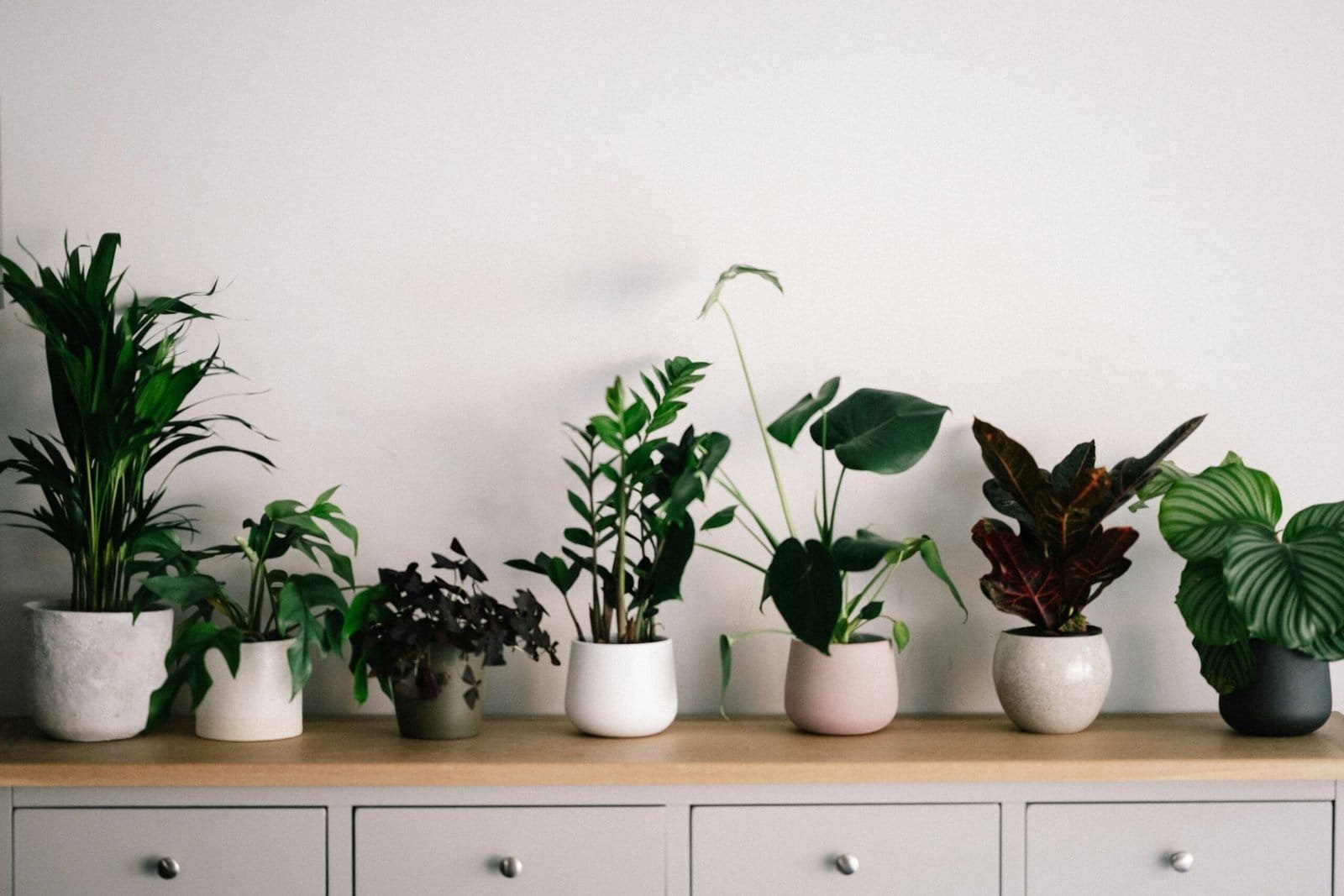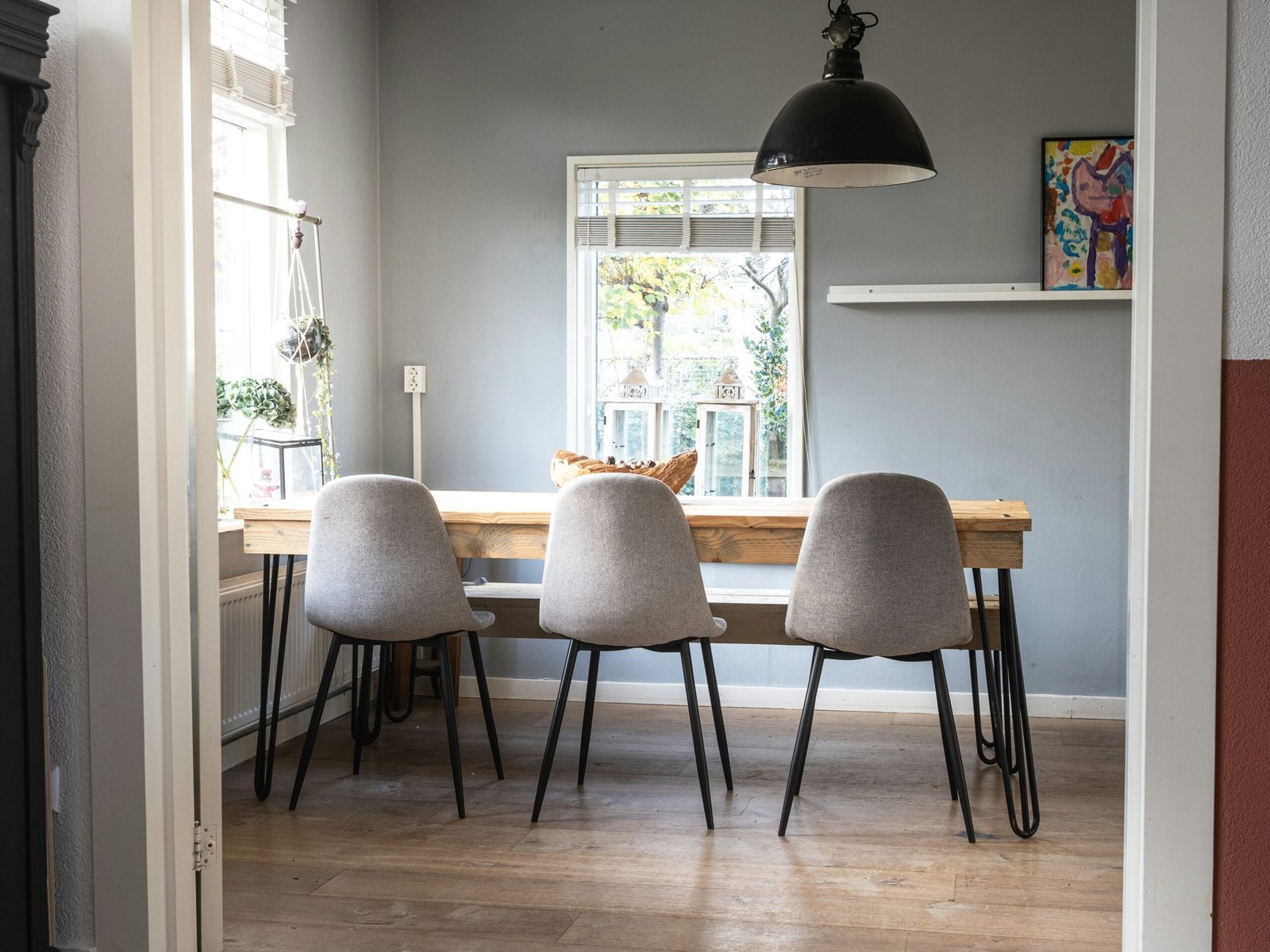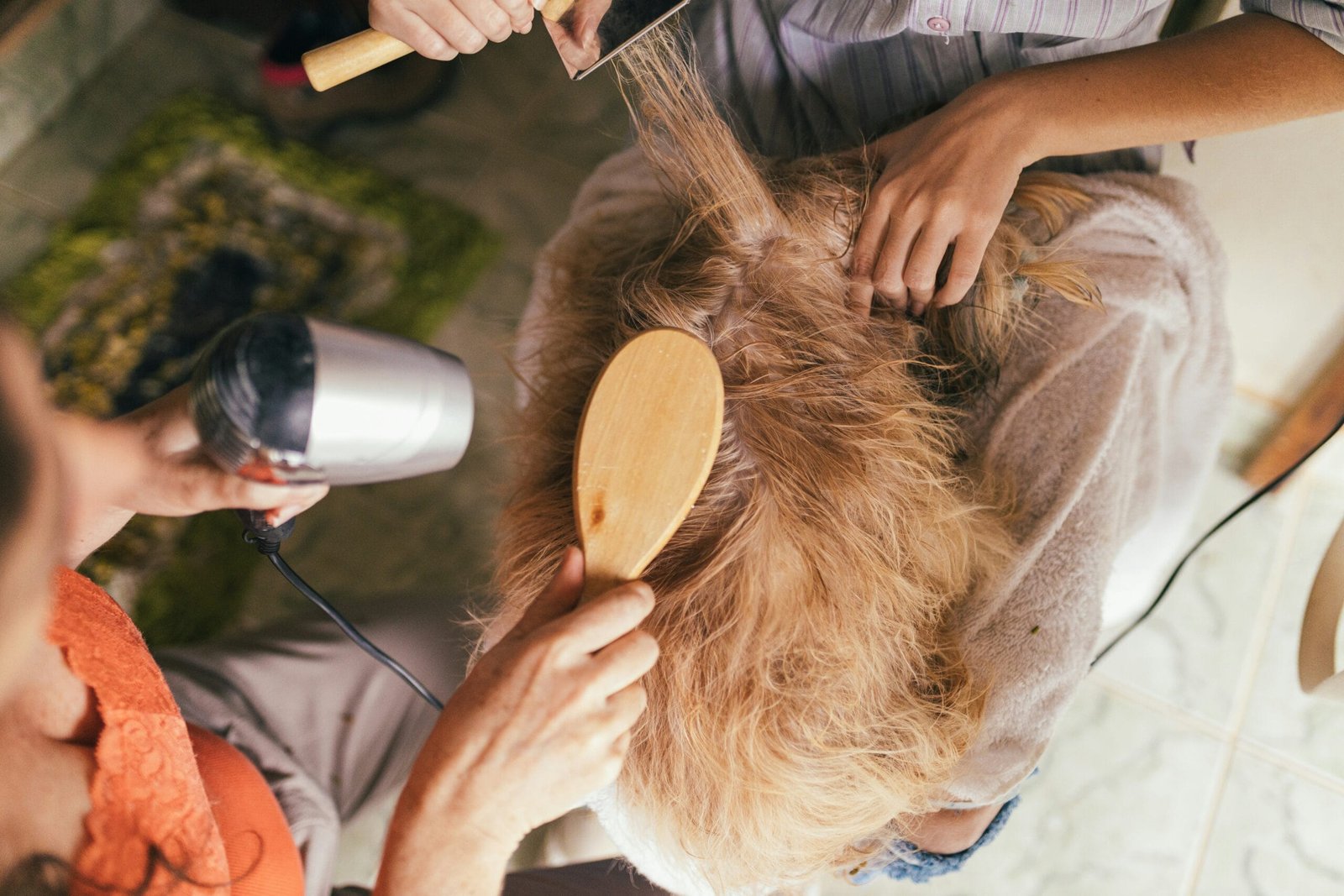Discover the perfect balance between pets and indoor plants in your home. This blog post explores the benefits of having pet-friendly plants, highlighting their role in enhancing air quality and promoting a healthy living environment. Learn how to choose safe indoor plants, create a harmonious space for both your furry friends and greenery, and understand the importance of responsible pet ownership. With tips on plant maintenance and design considerations, you can cultivate a peaceful sanctuary that enriches the lives of both pets and plant enthusiasts. Embrace the joy of gardening while ensuring the safety and well-being of your beloved animals.
Introduction: The Importance of Pets and Indoor Plants
The relationship between pets and humans is timeless, offering companionship that enriches our daily lives. Pets serve not only as loyal friends but also provide emotional support, promote mental health, and encourage physical activity through play and care. Their presence brings joy, laughter, and a sense of purpose, creating an atmosphere filled with warmth and affection. In parallel, indoor plants offer aesthetic and physiological advantages that complement the well-being of both our living spaces and, interestingly, our pets.

Indoor plants not only enhance the visual appeal of our homes but play a significant role in improving the air quality. They can effectively absorb toxins and release oxygen, contributing to a healthier environment for both humans and animals. Certain plants, carefully chosen, can boost our pets’ health by providing clean air and a calming atmosphere, aiding in reducing anxiety levels for both pets and their owners. By creating a symbiotic relationship with indoor vegetation, pet owners can cultivate a serene sanctuary that benefits all inhabitants.
Please, read our post and do not forget to check our YouTube channel “Grig Stamate”:
https://www.youtube.com/@GrigStamate
You will find there, thousands of designing, furnishing, and decorating ideas for your home interior and outdoors.
Allow me to mention three of them:
Small Dreamy Family Homes – New Creative Interior Design Ideas, #4 (video)
Small Dreamy Family Homes [NORDIC STYLE Design] #2 (video)
Small Dreamy Family Homes [NORDIC STYLE DESIGN] (video)
Moreover, engaging with pets and plants fosters a sense of responsibility and nurturing within the household. Caring for pets instills habits of empathy and understanding, while tending to plants encourages patience and diligence. This nurturing dynamic not only strengthens the bond between pets and their owners but also underscores the significance of a natural and harmonious living environment. As we delve deeper into the topic, it is important to consider how both pets and indoor plants contribute uniquely to a fulfilling domestic life, enhancing the overall health and happiness of our homes.
Understanding Pet-Safe Plants
Indoor plants can enhance the aesthetic appeal of a home while also providing a healthier environment. However, pet owners must prioritize the safety of their furry companions when selecting greenery. Certain plants are toxic to cats and dogs, and understanding which species fall into this category is crucial to avoid potentially harmful consequences. Common pet-toxic plants include lilies, poinsettias, and philodendrons, which can lead to serious health issues if ingested.
Researching the toxicity of indoor plants is essential before introducing them into your home. The ASPCA maintains a comprehensive list of poisonous and non-poisonous plant species, serving as a beneficial resource for pet parents. Additionally, many local gardening centers and nurseries can provide information on safe options for households with pets. A few examples of pet-safe plants include spider plants, Boston ferns, and bamboo palms, which are not only visually appealing but also contribute to cleaner indoor air.
It is also worth noting that while some plants may not be toxic, they could still provoke an allergic reaction in pets. For instance, certain varieties of grasses can cause gastrointestinal distress when consumed. Therefore, pet owners should remain vigilant about the types of plants introduced into their living spaces. There are humorous anecdotes involving pet owners neglecting this aspect, leading to their cats or dogs having unexpected reactions, such as knocking over plants or showing signs of distress. These experiences serve as valuable reminders to research and choose wisely.
In conclusion, understanding which indoor plants are safe for pets is essential in creating a harmonious and healthy living environment. By taking the time to educate oneself, pet owners can enjoy the benefits of indoor plants without the risks associated with toxic species.
Top Pet-Friendly Indoor Plants to Consider
Creating a safe environment for your pets while enhancing your home with indoor plants is entirely possible. Here we present a selection of pet-friendly plants that are known not only for their beauty but also for being safe for both cats and dogs.
Spider Plant (Chlorophytum comosum): Renowned for its air-purifying abilities, the spider plant is also easy to care for, thriving in bright, indirect sunlight. Its pink flowers and arching leaves are appealing, and many cats enjoy playing with its hanging tendrils. These playful interactions are typically harmless, as the plant is non-toxic.
Bamboo Palm (Chamaedorea seifrizii): This popular and elegant plant is beneficial for your indoor air quality. The bamboo palm prefers bright light but can adapt to lower light conditions as well. Dogs and cats can coexist alongside this plant without worry, allowing your furry friends to lounge nearby without risk.
Boston Fern (Nephrolepis exaltata): This lush, feathery fern brings a delightful touch of greenery to your home. It thrives in humid environments, making it perfect for bathrooms or kitchens. While the Boston fern serves as a fine air filtration system, pet owners should be mindful that this plant enjoys a bit of extra moisture, which might invite curious pets to explore its dense foliage.
Areca Palm (Dypsis lutescens): Linking tropical vibes to your living space, the areca palm stands out for its versatility and pet safety. This palm thrives in bright, filtered light, providing an exotic flair while remaining safe for pets. Cats might enjoy climbing nearby furniture to get a better view of this attractive plant.
When selecting indoor plants, it’s essential to ensure they are not only aesthetically pleasing but also safe for your beloved pets. These listed options promote a harmonious living space where both pets and plants can coexist happily.
Plants That Boost Air Quality and Pet Health
Indoor plants not only enhance the aesthetic appeal of a living space, but they can also significantly improve air quality, benefitting both our beloved pets and us. Poor indoor air quality can lead to a variety of health issues, including respiratory problems and allergies. Fortunately, specific houseplants have been shown to mitigate these effects by removing toxins from the air and producing oxygen. Notable among these are spider plants and peace lilies, which are favored for their air-purifying capabilities.
Spider plants (Chlorophytum comosum) are renowned for their resilience and ability to thrive in varied conditions. They can absorb carbon monoxide, formaldehyde, and xylene, making them excellent for creating a healthier environment. Pet owners report that since introducing spider plants into their homes, their furry companions have shown less respiratory distress and have appeared more energetic. These plants are also non-toxic to pets, which is a crucial consideration for those with curious cats and dogs.
Peace lilies (Spathiphyllum) are another excellent choice for enhancing indoor air quality. Known for their striking white flowers, peace lilies adeptly filter pollutants such as ammonia and benzene. Many pet owners have shared how their dogs and cats seem to breathe easier and exhibit calmer behavior when peace lilies are present. Furthermore, their low-light requirements make them an ideal option for various indoor settings.
Incorporating these plants into your home can positively impact the environment while ensuring your pets remain safe. The science behind plant interactions with indoor air quality showcases the importance of making informed selections when designing a pet-friendly indoor space. Apart from their aesthetic benefits, indoor plants like spider plants and peace lilies serve as a natural solution to improving air quality, contributing significantly to the health and happiness of both pets and their human companions.
Designing Your Space with Pets in Mind
Creating a harmonious space for both your indoor plants and your beloved pets requires careful consideration and planning. One effective strategy to keep your pets safe while allowing greenery in your home is to elevate your plants. Consider placing pots on shelves or tables out of reach of curious paws. This not only keeps your plants safe from being nibbled but also adds an interesting visual layer to your decor.
Another excellent option is to utilize hanging planters. Suspended pots not only allow you to feature beautiful plants while minimizing the risk of your pets making a swift snack out of them, but they also save valuable floor space. When selecting hanging plants, ensure they are non-toxic to dogs and cats in case they manage to get close. Choose sturdy options that can withstand a little jostling, as playful pets might inadvertently disturb them during their explorations.
Designating specific areas in your home for your pets can further mitigate the likelihood of plant-related mishaps. By creating pet-friendly zones, where your furry companions can lounge and play, you delineate boundaries that can help prevent accidental plant damage. You might consider providing engaging toys or cozy bedding in contrast to the greenery around them to maintain their interest elsewhere.
Moreover, you can playfully incorporate plants into your pet areas. For example, choosing non-toxic varieties for these designated spots can create a visually appealing environment without compromise. Opt for plants that are resilient and resistant to typical pet antics; this way, you’ll foster a delightful atmosphere without sacrificing safety or style. By combining these thoughtful strategies, you can successfully design a space that nurtures both your indoor plants and your cherished pets.
Maintenance Tips for Pet Owners
Maintaining a healthy indoor plant environment is essential, especially for pet owners who must be mindful of their furry friends’ interactions with both plants and soil. The first step in ensuring the well-being of your plants is to choose the right location. Position your plants in areas that are accessible to natural light but out of reach of curious pets. This not only keeps your plants thriving but also prevents any potential plant-related mischief, such as digging or nibbling.
Watering your plants regularly is vital; however, it is advisable to do so at times when your pets are otherwise occupied. Many pet owners have learned the hard way that cats find damp soil irresistible! By watering in the morning or evening when your pets might be busy napping, you can reduce the chance of them exploring the freshly moistened soil. Using self-watering pots can be an excellent solution for those who might forget a schedule, allowing you to maintain your plants with minimal fuss.
Fertilizing is another critical aspect of plant care, but it’s essential to choose pet-safe options. Organic fertilizers, such as compost tea, are typically safer and beneficial for indoor plants. Remember to keep all gardening products securely stored and out of reach of pets to avoid any accidental ingestion. Additionally, regular trimming of leaves and stems not only keeps your plants looking pristine but also allows you to promptly remove any drooping leaves that might attract the attention of curious pets.
Lastly, entertaining your pets is a great way to discourage them from interfering with your precious plants. Providing engaging toys and activities can divert their enthusiasm from your greenery. This harmonious balance between plant care and pet management can help create a thriving indoor environment for everyone.
Warning Signs: Keeping an Eye on Your Pets
As pet owners, it is crucial to be vigilant about the interactions between our furry friends and indoor plants. Many common houseplants can pose potential hazards if ingested by dogs or cats. To ensure the well-being of our pets, we should be aware of the warning signs that indicate possible plant-related issues. Common symptoms that may arise include vomiting, diarrhea, excessive drooling, difficulty breathing, or lethargy. Any noticeable changes in your pet’s behavior or physical condition should prompt immediate attention.
If you suspect that your pet has ingested a toxic plant, it is essential to act promptly. First, try to identify the specific plant involved; this information will be invaluable to veterinary professionals. Keep the plant’s name and a description of your pet’s symptoms ready when contacting your veterinarian. This knowledge will enable them to provide tailored advice based on the plant’s toxicity and your pet’s condition.
In addition to recognizing signs of distress, maintaining a proactive approach is vital. Create a safe environment by keeping potentially harmful plants out of reach and educating yourself about which plants are safe for pets. Consider placing non-toxic plants like spider plants or Boston ferns in areas where your pets cannot access them. This not only enhances your home’s aesthetic but also helps avoid potential health risks.
Moreover, monitoring your pets’ behavior around plants is essential. If you notice your pet showing interest in a specific plant, understand that their curiosity could lead to unwanted consequences. Implementing training techniques to discourage this behavior can be beneficial. Remember, the health and safety of your pets should always come first, and being informed creates a nurturing home environment.
Creating a Pet-Plant Harmony
Establishing a peaceful coexistence between pets and indoor plants is vital for creating a harmonious living environment. As pet owners, acknowledging the natural instincts and behaviors of our furry companions can significantly enhance this relationship. Cats and dogs are often curious and may tend to explore their surroundings by sniffing, tasting, and occasionally uprooting plants. A comprehensive understanding of these behaviors will not only assist in preserving the integrity of your indoor garden but will also promote the well-being of your pets.
To begin fostering this harmony, it’s crucial to select pet-friendly plants. Many houseplants can be toxic to cats and dogs, causing adverse health effects. Researching safe options, such as spider plants, Boston ferns, and bamboo palm, ensures that your home remains a sanctuary for both pets and lush greenery. Placing these suitable plants in locations that are less accessible to your pets can further bolster their safety.
Moreover, observing your pets’ interactions with the plants serves as a preventive measure against destructive habits. For example, if you notice a cat frequently nibbling on a particular plant, it may be prudent to relocate it to a higher shelf, thereby eliminating any temptation. Additionally, incorporating deterrents such as bitter sprays may help discourage chewing without endangering their health.
Reflecting on my own experience, I found the process of adjusting to living with both plants and pets to be enlightening. I initially struggled with my cat’s penchant for exploring every new addition to my plant collection. After much trial and error, I discovered that organizing my plants on elevated surfaces not only protected them but also satisfied my cat’s curiosity by creating an interactive environment where she could observe without being destructive. This thoughtful planning culminated in a mutually enjoyable space, allowing my pets and plants to thrive side by side.
Conclusion: The Bright Side of Adding Greenery
In this blog post, we have explored the various ways indoor plants can contribute positively to the health and well-being of both cats and dogs. The right selection of plants not only enhances the aesthetic appeal of your living space but also fosters a harmonious environment that supports your furry companions. By choosing non-toxic, pet-friendly plants, you can create a safe haven for your pets while enjoying the multitude of benefits that greenery brings, such as improved air quality and mental health.
Additionally, we have discussed that the presence of indoor plants can stimulate the senses and curiosity of pets, offering them a natural source of engagement. Moreover, the act of tending to plants can serve as a therapeutic activity for pet owners, promoting mental well-being and relaxation. The bond between pets and plants can lead to a nurturing atmosphere, where both animal and botanical life coexist in balance.
We encourage readers to reflect on their own experiences with indoor plants and pets. Have you integrated greenery into your home? What challenges or joys have you faced in this endeavor? Sharing your stories, questions, or even photographs on social media can help foster a sense of community among fellow pet owners and plant enthusiasts alike. Your experiences may serve as a source of inspiration or guidance for others looking to navigate the world of indoor plants with their beloved animals.
Embracing the presence of plants in a pet-friendly manner opens up new avenues for enjoyment and companionship in your home. The partnership between cats, dogs, and plants enriches our lives, creating a bright and welcoming environment for all. Let us celebrate this symbiotic relationship and continue to share our journeys in cultivating a healthy, vibrant living space.
Other related posts from our website:
https://howtobuildahouseblog.com/how-to-get-friendly-with-an-unknown-dog/
https://howtobuildahouseblog.com/why-dogs-love-to-tear-papers/
https://howtobuildahouseblog.com/the-best-indoor-plants-that-thrive-in-low-light-conditions/
Thank you so much for your attention.
Stay tuned. We will upload many other amazing posts to our website and videos onto our YouTube channel.
Thank you so much.
for your time and attention.
Best Regards
See you to another post,
Bye, Bye


